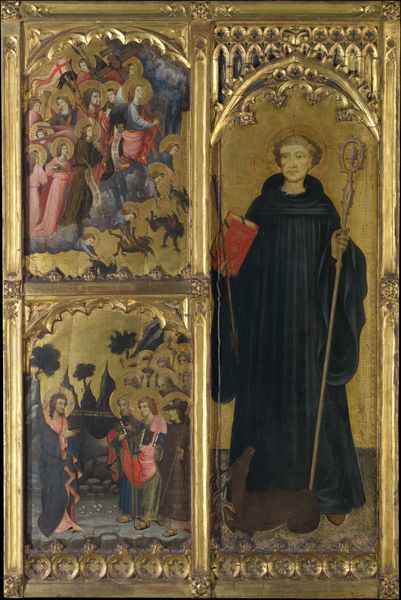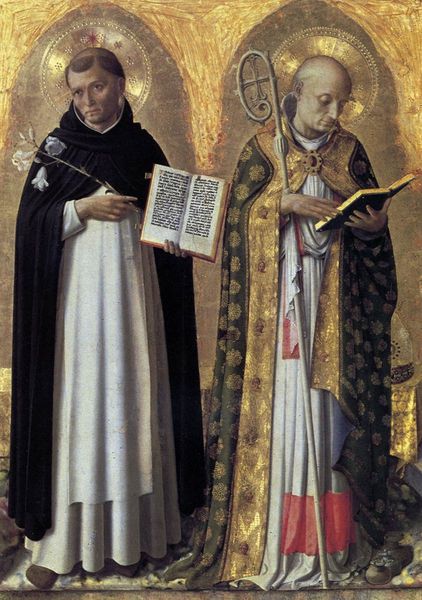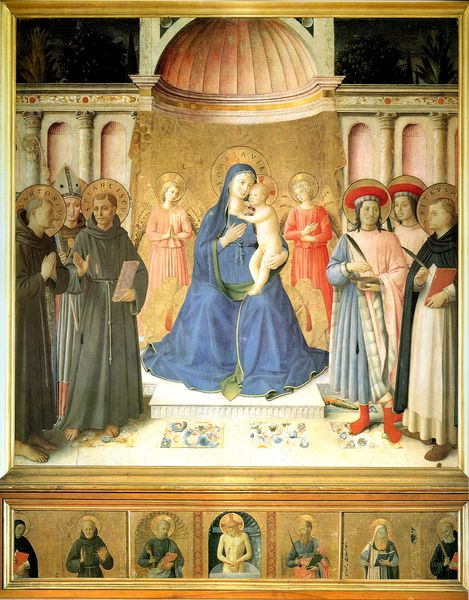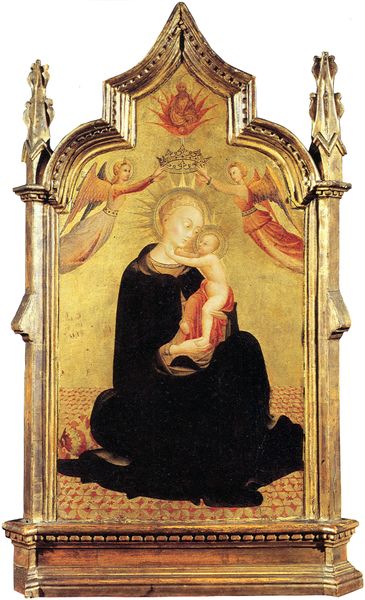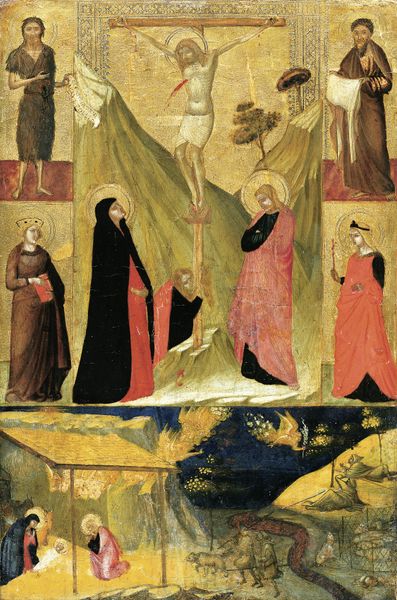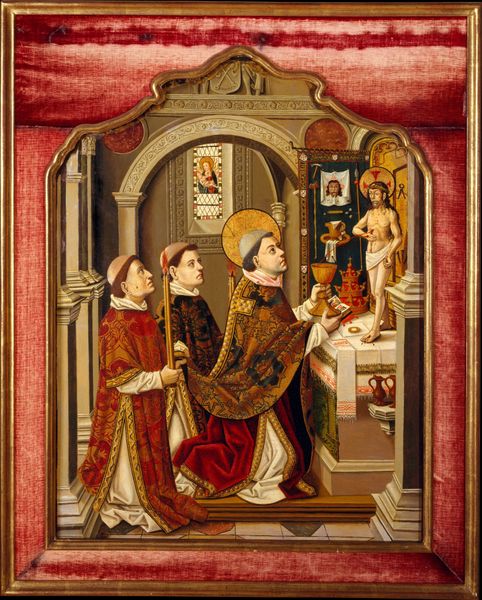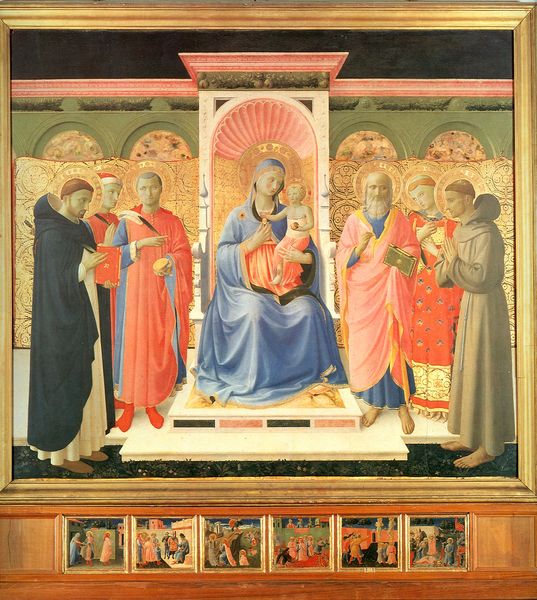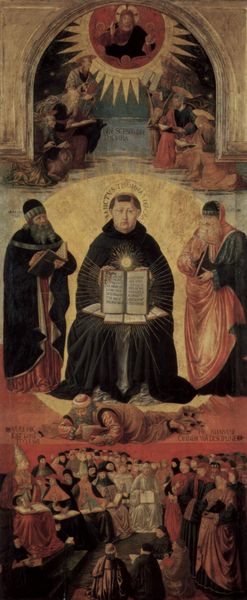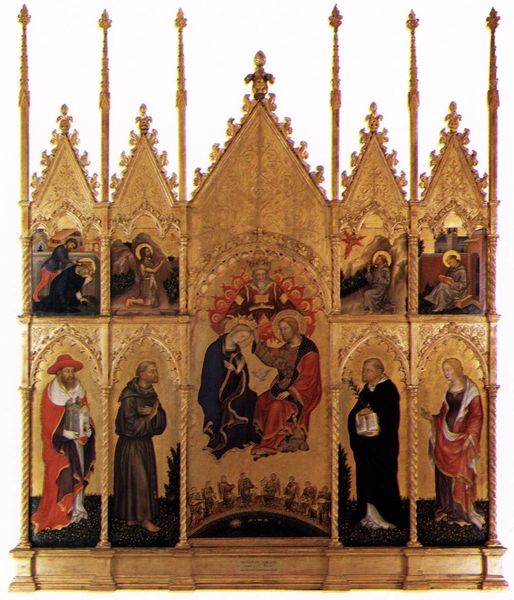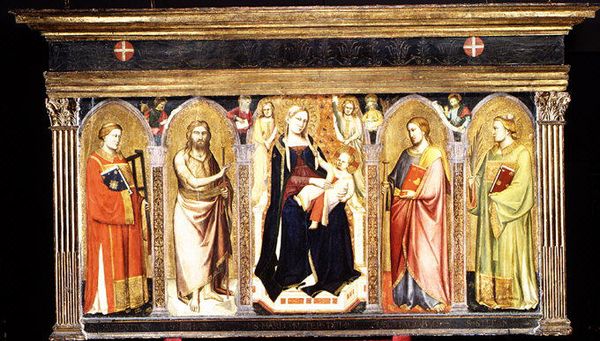
tempera, painting
#
portrait
#
tempera
#
painting
#
christianity
#
history-painting
#
italian-renaissance
#
early-renaissance
#
angel
Dimensions: 220 x 385 cm
Copyright: Public domain
Editor: St. Bernardine of Siena with the Angels, created around 1506 by Andrea Mantegna, immediately strikes me as surprisingly theatrical for an early Renaissance tempera painting. There's almost a stage-like quality to it. Curator: Indeed, observe the carefully constructed space and precise rendering of form. Mantegna has employed rigorous perspective and chiaroscuro to model St. Bernardine's figure, thus creating a highly rational composition, very characteristic of his time. Editor: I’m struck by the juxtaposition of earthly and heavenly. You've got Bernardine holding what appears to be a radiant, gilded reliquary and surrounded by ethereal figures, yet grounded by the palpable texture of his robe. What was the purpose of crafting it so realistically? Curator: Ah, consider the materiality: tempera applied meticulously to achieve trompe-l'oeil effects. The very crafting emphasizes not only spiritual power, but the Church's earthly manifestation of it. His attire marks both humility and high ranking—the weave suggests handspun origins while the dyes imply expensive imported commodities from afar, demonstrating a commitment to material excellence as divine offering. Editor: It does also feel politically charged. Look at the setting: it appears as a loggia where there's this inscription on the frieze overhead, with angels holding grapes. It's so luxurious compared to his simple religious garb, making him look almost secondary within it all. Curator: Observe that the painting acts as a celebration of Bernadine and his impact and influence, but the material execution also demonstrates an incredible level of craftsmanship for the Church itself. The use of precious materials communicates not merely an aesthetic aim but signals cultural importance. Editor: Right. He’s framed, then, by the very institution to which he devoted himself—a potent material and political message. I now find my attention captured by the hands, both human and divine, rendered with such deliberate form; it draws you directly towards the symbolic importance of labour itself. Curator: Precisely, labour understood here is an emblem of a specific historical condition; that is, a period when piety and aesthetic refinement walked alongside one another, in order to affirm the prestige and legacy afforded under Christian virtue and its values. Editor: Seeing that interplay makes me view early Renaissance art not just as symbolic of faith but as inextricably tied to socio-economic narratives around skill and craftsmanship. Curator: Precisely; one can only gain a much deeper, richer experience from works of this magnitude once we account for its forms.
Comments
No comments
Be the first to comment and join the conversation on the ultimate creative platform.
